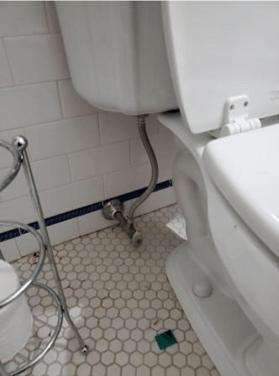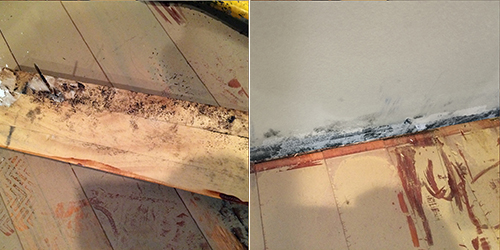How to Repair and also Stop Bathroom Water Damage
How to Repair and also Stop Bathroom Water Damage
Blog Article
Just about everyone has got their own individual idea when it comes to Preventing Water Damage in the Bathroom.

The bathroom is very at risk for moist build-up and also potential water damage as a result of the frequent use of water in it. This post supplies easy inspection methods to aid spotting water damages hazards.
The regular use water in the restroom makes it very vulnerable for damp buildup and prospective water damages. By inspecting it frequently, you can minimize water relevant damages.
The adhering to collection of evaluations is simple to do and also should be done when in every 3 months in order to maintain your washroom in good shape and to prevent potential water damages triggered by the tub, the shower, pipe joints as well as plumbing, sinks, cupboards, and also the commode
Do not forget doing these examinations and also be detailed while executing them. Remember that these straightforward examinations can conserve you a great deal of cash by giving very early signs for water damages
Sinks and also Cabinets
Sinks and also closets are revealed to dampness and also moisture everyday as well as are typically ignored. Check frequently under the sink as well as on the countertop above it. Repair any drip in the trap as it may suggest drain issues. Browse the sink, sluggish draining pipelines might suggest a blocked drain. Replace sink seals if they are broken or loosened.
Bath tub and also Shower
The shower and also bath tub call for unique focus as well as upkeep. Inspect the ceramic tiles as well as replace if cracked. Make sure that there is no missing cement in between the floor tiles. Check as well as replace broken caulking at joints where the walls meet the flooring or the bath tub. Obstructed drains and pipes troubles will certainly avoid the bathtub from drying out and also might suggest serious problems under the bath tub. Talk to a professional immediately to stop structural damage. Take notice of stainings or soft areas around the bathtub wall surfaces as they might suggest an internal leakage.
Plumbing
Signs for water damages are difficult to detect given that the majority of pipelines are set up inside the walls.
Pay special focus to flooring and also wall surfaces wetness and discolorations as they may indicate an unseen plumbing issue. Check dampness levels in adjoining areas also.
The Toilet
The toilet is a vulnerable water junction. Examine the water lines as well as look for leaks around the commode seat, in the pipe, as well as under the water container. If you discover any signs of wetness on the floor around the bathroom, check for leakages in the toilet rim and also storage tank seals.
Be aware that hanging bathroom bowl deodorants raises the possibilities for obstructions.
Water Damage Signs In The Bathroom To Avoid Cleanup
Musty smell
This is one of the easiest signs to catch because musty smells are so odorous. The damp, earthy, moldy smell should be a big red flag. The smell will develop when moisture gets trapped in surfaces, and begins to facilitate mold growth. Leaking pipes under cabinets, inside walls, and behind shower fixtures will cause moisture to stay trapped and not dry, which will lead to mold growth and spread. As soon as you notice any musty smells in your bathroom, have it checked for hidden water damage and cleanup signs.
Visible mold
If the smell isn’t there to give it away, sometimes you will actually see mold growth. Finding mold in your bathroom is a serious problem, because mold is very harmful to your health. By the time mold growth is visible, it also means that water damage has already occurred and been present for some time. The only way the mold problem can be resolved is to find the source of the moisture and get it stopped. To safely and adequately remove mold, you need to have professionals handle the remediation. Do not waste any time in getting mold problems addressed, fixed, and sanitized so that you can protect you and your family from the many respiratory symptoms caused by mold exposure.
Damaged floors
Bathroom floors should be able to withstand some exposure to water while still remaining in good condition. However, when excess exposure or water leaks occur, they will begin to damage even the most water-resistant flooring. If you notice any cracking, bubbling, staining, or warping on your bathroom floors, there is probably a water leak somewhere causing the distortion. If you notice areas of the floor have become softer, or even have a spongy feeling, there is probably damage to the subfloor. Subflooring is typically made up of plywood. When plywood is exposed to water or moisture, it will absorb it. Once it has become saturated, the weight of the excess water will cause the wood to swell and soften. Check the floors in your bathroom frequently to catch any of these sings before they lead to damaged subflooring.
Changes on walls
When water leaks behind walls, it will cause changes in the drywall. Peeling plaster, blistering paint, and soggy wallpaper are all good indicators that excess water is building up behind the wall. Water leaking behind drywall will cause it to swell and be soft to the tough. If you start to notice gaps along the trim of your walls, or where tile meets the wall, it could also be a strong indicator that there is a leak behind the wall. Any changes, distortion, or damage on the walls should be evaluated as soon as you notice it to prevent further water damage and cleanup.

We had been brought to that write-up on Looking for Signs of Water Damage in the Bathroom from an associate on our other web blog. Sharing is nice. Helping people is fun. Thanks a lot for going through it.
Visit Our Site Report this page